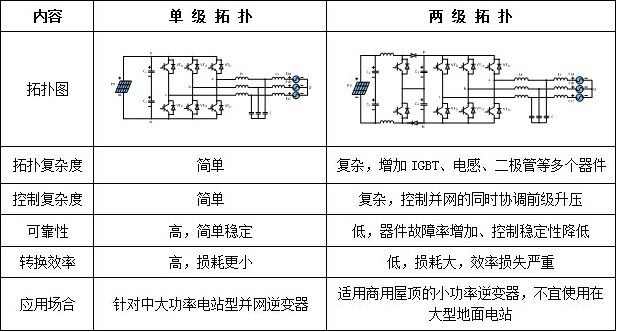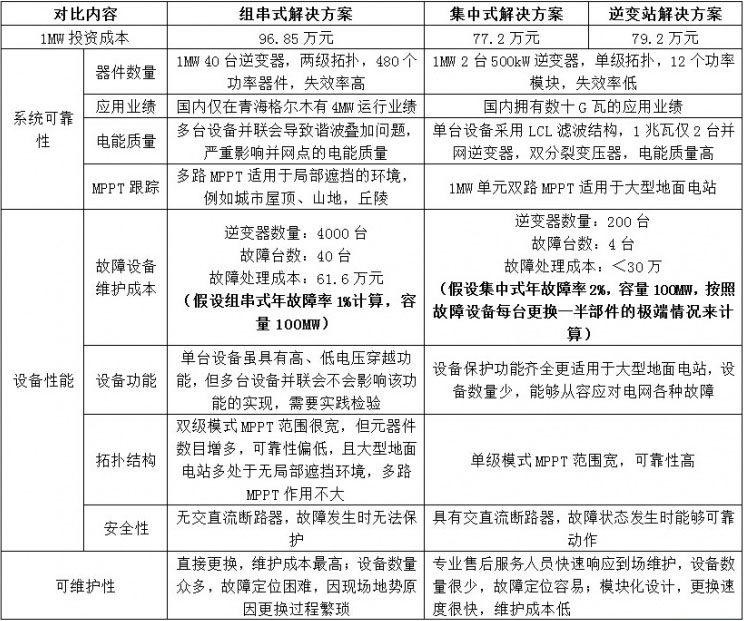The National Energy Administration finalized the new installed capacity of domestic photovoltaics reached 14GW in 2014. Accompanied by the increase in the planning target of photovoltaic power plants, people have discussed the design of power plants, especially for the two types of photovoltaic inverters: string and centralized. select. Compared with the international market, the domestic market is dominated by large-scale ground power stations, and more photovoltaic investors tend to use centralized inverters. This paper starts with the inverter technology program and discusses the application scenarios and advantages and disadvantages of the two schemes. analysis. 1. Introduction Megawatt-level box-type inverter station solution: 1MW unit uses a megawatt-level box-type inverter station and integrates two 500kW grid-connected inverters (integrated DC distribution cabinets), AC distribution boxes and other equipment. The box-type inverter station enclosure protection class up to IP54, can be installed directly outside, without the need to build an inverter room civil construction. Centralized solution: 1MW unit needs to build an inverter room, built-in two 500kW grid-connected inverters (integrated DC distribution cabinets), a communications cabinet and other equipment. On-site need to build inverter earth building. String solution: 1 MW unit uses 40 sets of 28kW string-type grid-connected inverters, and the string inverters have IP65 protection rating, which can be installed behind the component brackets. 2 program comparison 2.1 Comparison of Investment Costs String solution: Centralized solution: Megawatt box type inverter station solution: Remarks: The above prices are from various equipment manufacturers and system integrators. This quotation is for reference only. The number of equipment is calculated according to 1MW unit. 2.2 Reliability Comparison (1) Comparison of components Centralized solution: 1MW is equipped with 2 centralized grid-connected inverters. The single device adopts a single-level topology design with 6 common power modules and 12 grid-connected inverters. The single megawatt configuration device is small, the total number of devices is small, and the power generation unit is more reliable. In addition, the centralized inverter uses a metal film capacitor and has an MTBF of more than 100,000 hours, guaranteeing no replacement for 25 years. String solution: 40 tandem grid-connected inverters with 1 MW configuration. A single device adopts a dual-level topology design with 12 shared power modules and 40 480 grid-connected inverters. Power devices have a small electrical clearance and are not suitable for high altitudes. The string inverters are installed outdoors, and the wind and sun can easily cause aging of the housing and the heat sink; and the number of single-megawatt configuration devices is large, the total number of devices is large, and the reliability is low; using aluminum electrolytic capacitors, the MTBF is only a few. Thousands of hours and cannot be replaced on site after a failure. (2) Application performance comparison Centralized solution: Centralized grid-connected inverters are widely used in large-scale ground power stations. At present, 99% of photovoltaic power stations in China use this type of grid-connected inverters, which has a high market share and a high degree of recognition. String solution: There are few string-type grid-connected inverters used in large-scale ground power stations. Currently, only 4MW of operation is performed in Golmud, Qinghai, which has a low market share and low recognition. According to the statistics of IHS, the world's most authoritative photovoltaic inverter industry research institute, as of December 2013, about 2% of the world's power plants have adopted string-type solutions to access photovoltaic power plants with a capacity of more than 5MW. Among the representative regional markets, the highest proportion of the German market, the proportion of the use of string-type program is 12%; in recent years, the market capacity ranked first and second in China and the United States market, the use of string-type program is very low, the proportion is less than 1% . (3) Harmonics and circulation problems Centralized solution: 1MW power station requires only 2 grid-connected inverters to connect to double-split transformers, no need for commutation equipment on the AC side, and no need to consider the circulation problem and harmonic wave superposition problem. It is more reliable. String solution: 1MW up to 40 string-type grid-connected inverters, where the harmonic content of a single device at rated power is much higher than that of a centralized inverter, and when 40 inverters are connected in parallel, they will The problem of harmonic superposition at the grid connection point is more difficult to suppress. In addition, due to the use of a two-winding transformer on the AC output side, the circulation problem between multiple devices is severe. (4) MPPT tracking technology Centralized solution: The centralized grid-connected inverter adopts single-channel MPPT tracking technology, single-stage topology, and no BOOST circuit, and is fully applicable to the unobstructed environment of large-scale ground power stations, and has higher reliability. String solution: The string-type grid-connected inverter adopts multi-channel MPPT tracking technology, two-stage topology, BOOST boost circuit, and is mainly designed for distributed and small-scale power plants, while large-scale ground power stations have a single type of components. Uniform heading angle, no partial obstruction, no need to configure multiple MPPT inverters. (5) The number of faulty devices Assume that the string inverter failure rate is 1%, the centralized failure rate is 2%, and the plant capacity is calculated at 100MW. Centralized solution: A total of 200 centralized grid-connected inverters are required for 100 MW. According to the failure rate of 2%, the number of faulty devices is four, which takes up to <300,000 in consideration of the extreme conditions for replacing one half of each component. String solution: A total of 4000 tandem grid-connected inverters are required for 100 MW. According to the failure rate of 1%, the number of faults is 40. According to the maintenance concept of string replacement, a total of manual inverter replacement is required. For 40 times, a total of 616,000 yuan will be spent. 2.3 Equipment Performance Comparison (1) Comparison of inverter efficiency Why is the efficiency of the string-connected grid-connected inverter lower than that of the centralized one? The main reason is that the common string-connected grid-connected inverter adopts the DC-DC-AC two-stage topology, and the centralized inverter adopts the DC-AC single-stage topology because it is the multi-level DC boosting circuit that leads to the inverse. The overall efficiency of the inverter decreases, usually the single-stage conversion is more than 0.4% higher than the two-stage conversion efficiency, and the externally declared efficiency of the string inverter manufacturers is usually measured at a high DC input voltage, which is equivalent to closing the DC- DC inverter circuit, but in actual application, the bus voltage cannot be maintained at high voltage all the time, so the string inverter claims that the efficiency is far lower than the actual efficiency. According to the 100MWp power station (average sunshine hours in the provinces in the northwest are more than 3,000 hours, converted into the peak hours of sunshine is about 1650 hours), with reference to the current grid electricity price of 0.95 yuan / degree, 25 years to increase power generation income is 1650 yuan (ten thousand yuan ). 100 (MW) × 1650 (hours) × 25 (years) × 0.95 (yuan/degree) × 0.4% = 1568 (ten thousand yuan) (2) Functional Comparison The centralized grid-connected inverter has more comprehensive functions, such as night-time reactive power compensation (SVG), zero-voltage ride-through, reactive power regulation, power factor correction, etc., adapting to the technical requirements of a variety of power grid environments and large-scale ground power stations while being able to Respond to various dispatch instructions of the grid. String-type grid-connected inverters are designed for distributed power stations and small ground-based power plants. Their unit power is small. The total number of equipment required for large-scale ground power stations is huge. A single inverter can achieve zero voltage ride through However, when multiple machines are connected in parallel, it is difficult to implement such functions as zero voltage ride through, reactive power regulation, and active power regulation. Whether multiple devices can cope with the various faults of the power grid at the same time remains to be tested in practice. (3) Topology comparison The centralized grid-connected inverter adopts a single-level topology, with few power devices, simple control system, mature technology, and large-scale application in high-power grid-connected inverter products. The string-type grid-connected inverter adopts a two-stage topology, which has many power devices, complicated control system, and complicated driving, and is mainly applied to small and medium power inverters. Single-level vs double-level: Group topology vs. centralized topology: (4) Comparison of overload capacity The centralized grid-connected inverter has an overload capacity of up to 120%, can match a larger-capacity photovoltaic array, and brings more benefits to the user in a condition with good lighting conditions. The string-type grid-tied inverter overload capacity is only 110%, because the string inverter is limited by the protection level, and the heat dissipation part and the heating element need to be separately packaged in the design, and the cold air cannot pass through directly. The main heating element causes low heat dissipation efficiency, so the overload capacity is limited. 2.4 Maintainability Comparison The centralized grid-connected inverter adopts the modular pre-maintenance design, and the control system, cooling fan and power module adopt the modular design. After the professional service personnel locate the fault, it can be replaced in 20 minutes, which is very convenient. The string-type grid-connected inverter adopts the direct replacement maintenance method. Due to the large number of equipments, the on-site fault location is relatively complicated, and it is still necessary to communicate with the inverter manufacturers for confirmation; secondly, the inverter is dispersed in the field, and the replacement is difficult. Replacement and maintenance costs are high, and spare parts warehouses need to be specially configured. Especially in poor conditions in hills or stations, manual string inverters need to be handled for a long time, and there is no first-level confluence due to strings. Equipment, such as the DC link can not be disconnected during the day, there is a high voltage hazard, in order to protect the safety of personnel can only be replaced at night, affecting the maintenance efficiency. 3. Contrast summary Through the above comparison, it is not difficult to see that string inverters have large risks in the application of large-scale terrestrial power plants, but also increase the corresponding investment; while the centralized solutions and megawatt-level box-type inverter station solutions are specialized. For large ground power stations, the advantages are very prominent, and the application performance is also very extensive. The following three types of programs are systematically compared. 4 Conclusion The centralized solution and megawatt box-type inverter station solutions are widely used in large-scale ground power systems. The installed capacity of these power stations is more than 5MW, and they are generally located in the sparse desert and Gobi areas. The layout of components is consistent. Minimal partial occlusion; Medium voltage 10KV or above grid connection, high requirements on power quality and grid dispatch. Therefore, the inverter is required to have high output power, good reliability, quick and convenient operation and maintenance of the equipment, strong adaptability of the power grid, and the ability to deal with all possible faults of the power grid. Therefore, the high-power centralized inverter is more suitable for large-scale ground power stations above 5MW. String-type grid-connected inverter solutions are widely used in distributed power stations and small-scale power stations. The capacity of these power stations is usually less than 5MW. The home and commercial roofs are often used as component carriers. A single roof or a single capacity is often used. Less than 100kW, the system can be directly incorporated into the low voltage distribution network or used directly by the user. Distributed power generation system is affected by the roof angle, shadows of buildings, shades of trees, etc. The multi-channel MPPT inverter can flexibly configure the power and type of components. Therefore, the string inverter is more suitable for the following 5MW. Small ground power stations and distributed power stations. (TBEA Xi'an Electric Technology Co., Ltd.) External Shower Set,Square Bathroom Shower Sytem,Modern Rain Shower Wall Mounted,Chrome External Shower Head Set Kaiping Rainparty Sanitary Ware Technology Co.,Ltd. , https://www.rpshower.com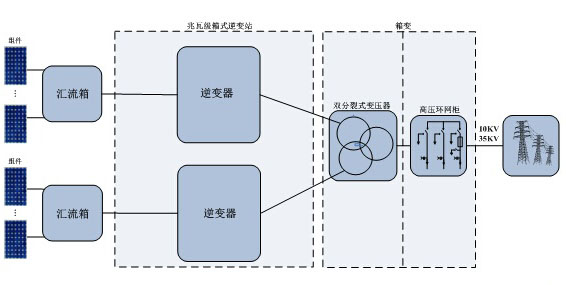
Megawatt box type inverter station solution 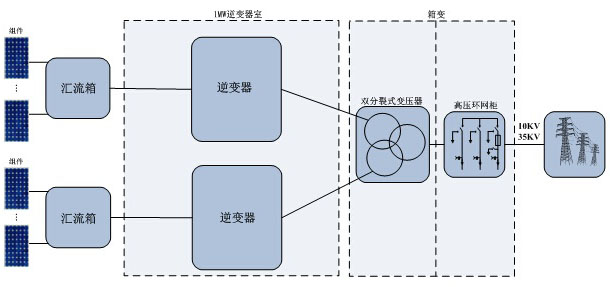
Centralized solution 
String solution 


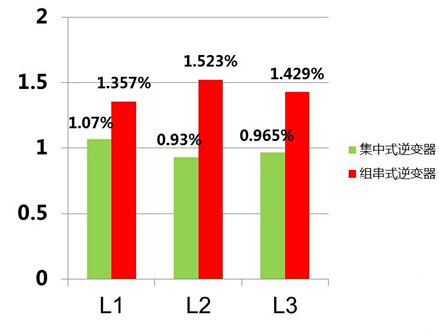
Harmonic current comparison of the rated power of a single device (data from CQC test report) 